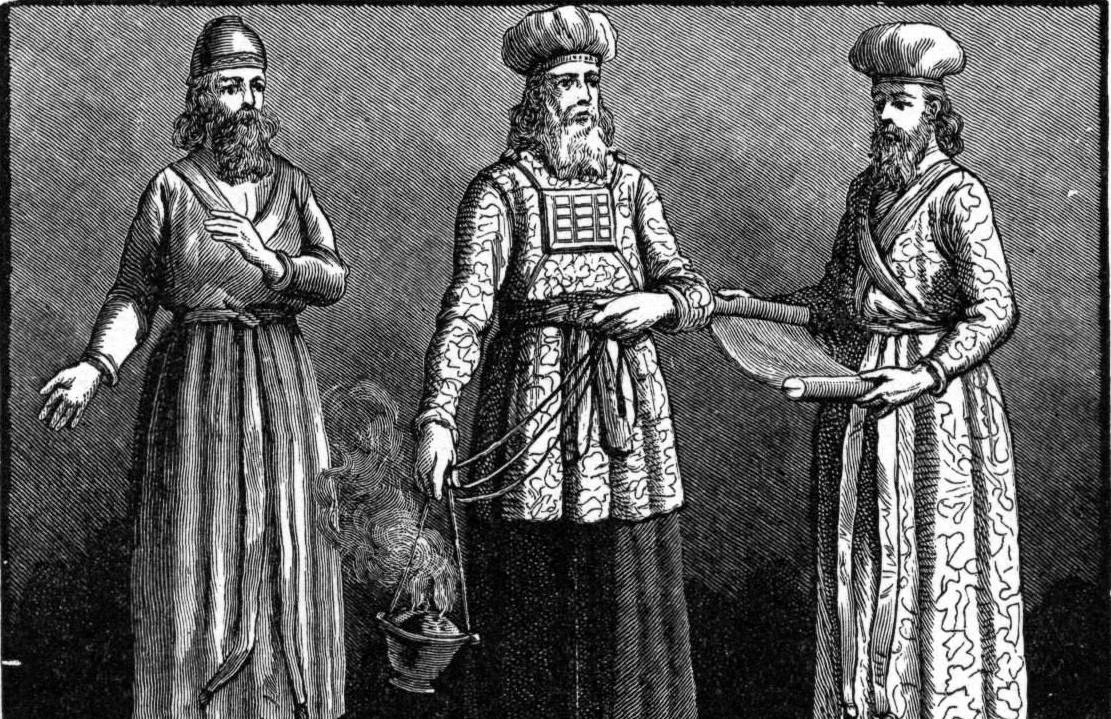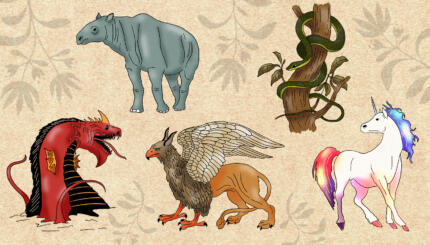Commentary on Parashat Tetzaveh, Exodus 27:20-30:10; Deuteronomy 25:17-19
We continue with the theme that defines most of the rest of the Book of Exodus: the construction and institution of the Mishkan, the portable sanctuary that was the place of worship for the Israelites and the House of God among the people during the years of wandering in the wilderness.
Parashat Tetzaveh specifically focuses on the Kohanim, the Priests who perform the rituals and sacrifices on behalf of the people. Great detailed descriptions are given of the complex ritual garments of the Kohen Gadol (the High Priest–regally resplendent in gold and adornments of precious stones. Details are also given for the seven-day period of sacrifices and rituals required to consecrate the priests for service. The parashah ends with a short description of the golden altar upon which incense was offered and how it too is to be consecrated.
In Focus
Make holy garments for Aaron your brother, for dignity and splendor. (Exodus 28:2)
Pshat
Following the instructions for the building of the Aron Kodesh (the Ark) in last week’s parashah and the lighting of the Ner Tamid (Eternal Light) at the beginning of the week’s portion, the Torah’s attention turns to issues related to the Kohanim (Priests). In a way, the Priests are considered to be in the same category of Klay Kodesh (“holy tools”) as the other objects built for the Mishkan. Aaron, Moses’ brother, and his sons are selected to serve in this important and hereditary office of religious leadership.
With your help, My Jewish Learning can provide endless opportunities for learning, connection and discovery.
But, before any discussion of the Priest’s actual responsibilities, their elaborate and regal vestments are described. Like all the other implements that will be used in the Tabernacle for the worship of God, the priestly garments are to be made of the finest materials, to be both functional and splendid. The costume of the high priest especially is very symbolic of the Kohen Gadol’s responsibility to serve on behalf of the people.
Drash
“Clothes make the man,” the old saying goes. Well, clothes certainly do seem to impress us human beings. Nothing tells you more about a person, or makes a greater first impression, than how one is dressed. It’s quite remarkable, really. A person’s entire character can be summed up by someone who does not know them simply by how they are dressed.
Jobs have been won and lost, relationships continued or ended, all based on the clothes we wear. The fashion industry certainly understands this important detail of human nature. That’s how they make their money. And so do schools and the military.
The whole point of putting people into uniforms is to minimize their differences; to make individualization impossible, and to reduce independence. You are what you wear. When we dress the same as others, it is because we don’t want to be seen as different. When we do want to stand out, we can do so through what we wear.
The Torah certainly understands this as well. In this week’s parashah, more than forty verses, an unusually high number for any single topic, are devoted to the subject of the Bigdei Kodesh, the holy clothing or ritual garments for the high priests. “Make Bigdei Kodesh–holy garments–for Aaron your brother,” Moses is told, “for dignity and splendor.” Most of the rest of this text is elaboration of this command; details of how these garments are to be made.
So what is so important about the garments of the High Priest? Does not Judaism, particularly in a ritual sense, usually focus on the inner qualities, frowning on such outward materialism as clothing? How then can these garments be holy? How can they alone bring dignity and splendor?
It seems that Torah is indeed telling us that clothes do make the man, or at least the role in which the man is serving. Aaron, already well respected and loved among the people, is to be dressed as befits a Kohen Gadol–a High Priest. When he engages in work that is holy, he is to be suitably dressed in holy garments; clothes that add dignity and splendor to the work.
This is Hiddur Mitzvah–the enhancement of the fulfillment of a mitzvah (commandment), through the adornment of the act. This is why we say Kiddush over fine wine in a beautiful cup rather than over juice in a paper cup. Both will fulfill the minimum requirement of the mitzvah–but by adding beauty we add to the holiness of the act.
But Ramban (Rabbi Moses Ben Nachman) notes that the commandment to dress the High Priest in garments for glory (kavod) and splendor (tiferet) is not only to enhance the status of the priest himself, but also to enhance the glory of God.
Ramban notes that in the mystical teachings, kavod and tiferet are Sefirot, Kabbalistic terms for emanations of God. And so, through these very specific types of garments worn by the Priest, God is connecting with the people and God’s presence amongst the people is further demonstrated. In some way, the spark of God that resides in all of us is brought out in the priest and worn on the outside with his clothing.
Just as the crown and royal colors command the respect of a people for a king, and enhance his position among his people, so too the Bigdei Kodesh add much to the honor and esteem of the High Priest, and to the Divine One whom the High Priest serves.
Through dressing in special garments, the priest is constantly reminded of his special role, and the sanctity of his calling. It is a symbol, a reminder. But Bigdei Kodesh–holy clothes–are only holy when they cover Ish Kodesh–a holy person. To be an Ish Kadosh one does not need to be a priest. We all have the potential for such holiness. Perhaps we just need to dress the part….
Dvar Aher
These are the clothes that they shall make… (Exodus 28:4)
The High Priest is compared to an angel, and must have special garments to do his work. Just as an angel is pure, so must the Kohen Gadol be pure as he accomplishes his tasks.
Rabbi Bechaye asks: Why are only six garments enumerated in this portion, when the High Priest actually wore eight garments? Because this parashah refers only to the garments in which Moses clothes him. The High Priest himself put on his trousers in private; and the tzitz was a platelet of gold worn on his forehead. It was an accessory rather than an article of clothing, and so was not mentioned here. (Tze’enah Ur’enah)
Provided by KOLEL–The Adult Centre for Liberal Jewish Learning, which is affiliated with Canada’s Reform movement.
kavod
Pronounced: kah-VODE, Origin: Hebrew, honor, respect.
Torah
Pronunced: TORE-uh, Origin: Hebrew, the Five Books of Moses.



